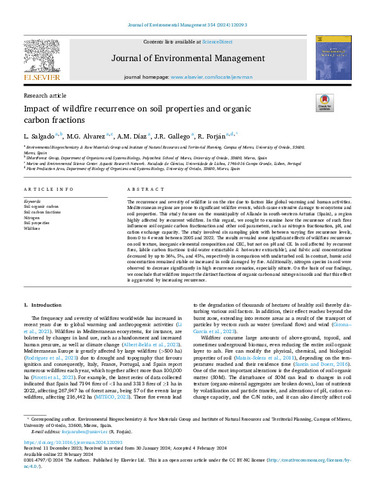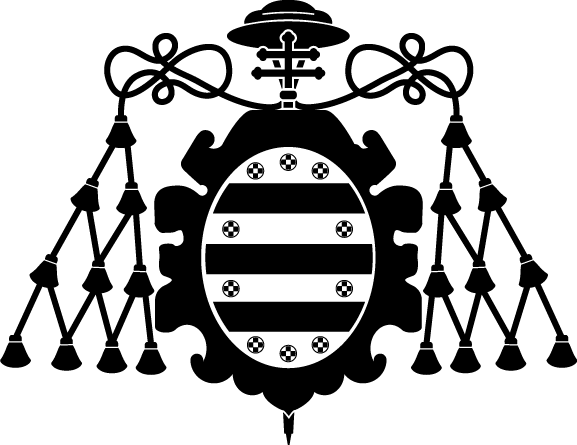Impact of wildfire recurrence on soil properties and organic carbon fractions
Fecha de publicación:
Versión del editor:
Citación:
Resumen:
The recurrence and severity of wildfire is on the rise due to factors like global warming and human activities. Mediterranean regions are prone to significant wildfire events, which cause extensive damage to ecosystems and soil properties. This study focuses on the municipality of Allande in south-western Asturias (Spain), a region highly affected by recurrent wildfires. In this regard, we sought to examine how the recurrence of such fires influences soil organic carbon fractionation and other soil parameters, such as nitrogen fractionation, pH, and cation exchange capacity. The study involved six sampling plots with between varying fire recurrence levels, from 0 to 4 events between 2005 and 2022. The results revealed some significant effects of wildfires recurrence on soil texture, inorganic elemental composition and CEC, but not on pH and CE. In soil affected by recurrent fires, labile carbon fractions (cold-water extractable & hot-water extractable), and fulvic acid concentrations decreased by up to 36%, 5%, and 45%, respectively in comparison with undisturbed soil. In contrast, humic acid concentration remained stable or increased in soils damaged by fire. Additionally, nitrogen species in soil were observed to decrease significantly in high recurrence scenarios, especially nitrate. On the basis of our findings, we conclude that wildfires impact the distinct fractions of organic carbon and nitrogen in soils and that this effect is aggravated by increasing recurrence.
The recurrence and severity of wildfire is on the rise due to factors like global warming and human activities. Mediterranean regions are prone to significant wildfire events, which cause extensive damage to ecosystems and soil properties. This study focuses on the municipality of Allande in south-western Asturias (Spain), a region highly affected by recurrent wildfires. In this regard, we sought to examine how the recurrence of such fires influences soil organic carbon fractionation and other soil parameters, such as nitrogen fractionation, pH, and cation exchange capacity. The study involved six sampling plots with between varying fire recurrence levels, from 0 to 4 events between 2005 and 2022. The results revealed some significant effects of wildfires recurrence on soil texture, inorganic elemental composition and CEC, but not on pH and CE. In soil affected by recurrent fires, labile carbon fractions (cold-water extractable & hot-water extractable), and fulvic acid concentrations decreased by up to 36%, 5%, and 45%, respectively in comparison with undisturbed soil. In contrast, humic acid concentration remained stable or increased in soils damaged by fire. Additionally, nitrogen species in soil were observed to decrease significantly in high recurrence scenarios, especially nitrate. On the basis of our findings, we conclude that wildfires impact the distinct fractions of organic carbon and nitrogen in soils and that this effect is aggravated by increasing recurrence.
ISSN:
Notas Locales:
OA ATUO24
Patrocinado por:
This research was partially funded by the project RISK - AQUA SOIL (RAS) (INTERREG ATLANTIC AREA PROGRAMME, RISKAQUASOIL-272-2016). Lorena Salgado obtained a grant PAPI-21-PF-27 funded by the University of Oviedo and Banco Santander ( MU-21-UP2021-030 32892642) . María G Álvarez obtained a grant 2022.13463 . BDANA funded by the Fundação para a Ciência e a Tecnologia .
Colecciones
- Artículos [37541]
- Biología de Organismos y Sistemas [776]
- Investigaciones y Documentos OpenAIRE [8415]
Ficheros en el ítem





